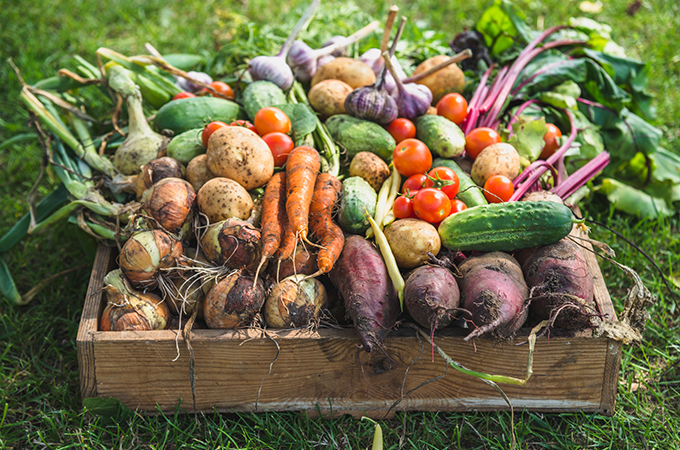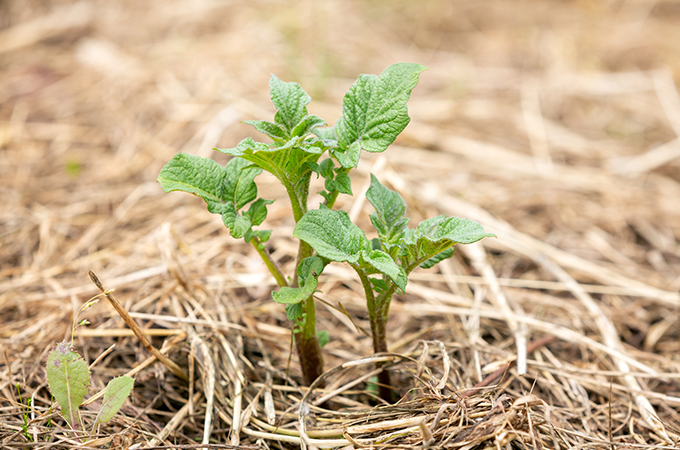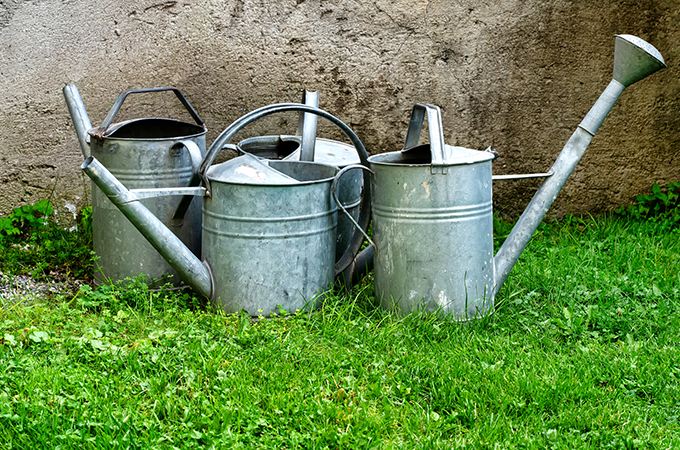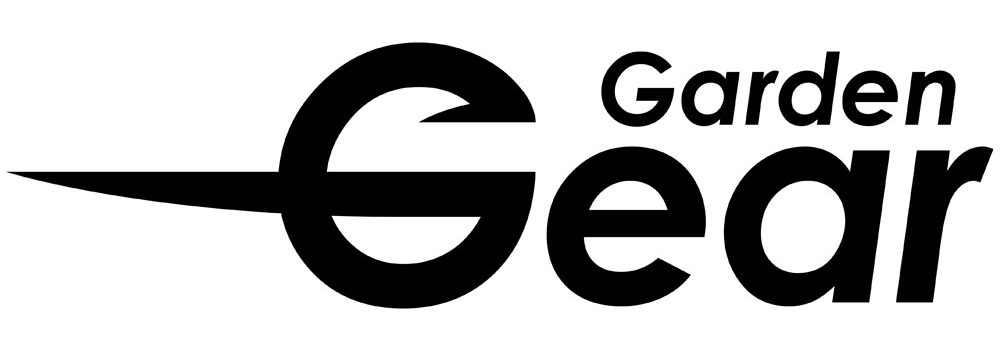Caring for your garden during a heatwave

Us Brits can never make up our minds about the weather. One minute it’s too rainy, the next minute we’re being subjected to a heatwave that’s intent on ruining our gardens.
But if you’re worried about periods of drought sabotaging your efforts in the garden, have no fear – we’ve got a few tips to help you look after your garden, so you can just sit back and soak up the sun while it lasts.
Harvest your fruit and veg

If your plants have fruit or veg ready for picking, harvest it as soon as you can. You’ll be helping to reduce the energy that your plants need to expend in order to stay alive. Any fruit that’s close to ripening can be picked to ripen indoors. Your plants will resume their normal productivity once the cooler weather has returned.
Remember to avoid cutting your grass, too, and leave it as long as you can. Longer grass will be able to withstand periods of heat better than shorter grass. It will help to trap any moisture in the air, as well as provide better shade cover for the soil. For more lawn care tips, take a look at our lawn care guide.
Make use of the shade

Shady areas of your garden will be its saving grace during heatwaves. Move potted plants to any available shade to protect them from as much of the sun’s glare as possible, or if your garden is short of any shady areas, you can create your own. Shade netting will be ideal – or you could even use any old net curtains you’ve got lying around.
Plants won’t grow as well in the shade, but it will greatly reduce the heat stress they would suffer than if left under the full heat of the sun. If you’ve got any cool-season plants such as cabbages, lettuces, or even fruits like strawberries, they will be very grateful for any shade you’re able to throw their way.
Avoid digging

By digging around in your vegetable beds, you’ll be causing the soil to lose what little moisture it’s been able to salvage during the hot weather. There’s no need to dig during heatwaves, as plants that need to be transplanted won’t be able to establish their root systems because of the stress that the intense heat will cause.
Avoid digging if you can and wait until the cooler weather returns to get stuck in with your planting – you’ll be reducing the evaporation that will occur throughout the day.
Leave the fertiliser alone

During periods of heat, plants like tomatoes tend to curl up their leaves so as to reduce water loss, and can even drop or stop producing flowers in an attempt to reserve the energy they need to survive. When you fertilise your plants or lawn, you’re signalling to the plant that it’s time for it to grow – during droughts they won’t have the energy they need to do this properly, as they need more water to properly process the extra nutrients.
Pause any fertilising you were planning on doing, and instead focus your efforts on watering the plants properly for the time being. This way you’ll be helping plants to focus on getting through the heat rather than waste precious energy on unnecessary growing which could damage them in the long run.
Mulch your plant beds

Mulching is a fantastic way to lock in any moisture that will already be in your soil – try and do this after watering if you can, so as to maximise the available humidity. Mulches will help to ensure that the roots of your plants stay cool and protected from any plant stress the heat might cause. Make sure to mulch any potted plants you have in your garden, too.
Mulches made from organic matter will be best, such as compost, old grass clippings, or leaves. Enthusiastic sprawling plants such as squashes can create a fantastic natural mulch, as they can keep the soil cool and protect the roots beneath by naturally shading it.
Be smart with your watering

Some areas get affected by hosepipe bans during the summer, but that doesn’t mean that your garden has to suffer. By being smart with your watering, you can ensure that your garden has all that it needs to survive any periods of drought. You may not be allowed to use your hose, but you can still use a watering can – by installing a water butt in your garden, you can make use of any rainwater that has built up beforehand, too. Or even recycle bath water once it’s cooled – make sure to use it on veg that you’ll need to wash before you eat it, though.
Water early in the morning instead of during the middle of the day. By watering as early as you can in the day, the water will be less likely to evaporate throughout the day. Avoid going for a light surface watering; this encourages plant roots to stay nearer the surface and will mean they shrivel and burn in the heat. Instead, give your soil a good soaking, and allow for the water to permeate the soil. Soak your soil every few days – check whether it needs watering by sticking your finger in the top few centimetres. If it’s dry, it needs a good watering. Mulch your soil after you’ve watered it to keep as much of that lovely moisture in as you can.
Potted plants and recently established plants will need more water than already established plants. Plants that have already established themselves will be able to survive a few days without water, whereas recently planted greenery will need that precious water to help it settle its root system. For flowerbeds and veg patches, scrape soil so that it surrounds the plants in a ‘bowl’ formation, or partially submerge old plant pots or bottles in the soil and water into these. This will help the water to slowly drain throughout the day and ensure that it goes directly to plant roots, where it’s needed most.
These garden care tips will help your beloved garden survive whatever the heatwave has to throw at it. Are there any interesting tips you think we’ve missed off our list? Let us know over on our Facebook page!
Lead image: eag1e via Getty Images.






